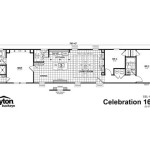Bounce House Business Plan: A Comprehensive Guide to Success
### Introduction Bounce houses, also known as inflatable bouncers, are a popular attraction at parties, events, and carnivals. Starting a bounce house business can be a rewarding venture, offering a fun and entertaining service to your community. This comprehensive business plan will guide you through the essential steps to launch and operate a successful bounce house business. ### Market Analysis 1.Target Audience:
Identify your target audience by understanding the demographics of your local community. Consider factors such as age, income level, and family size. 2.Competitor Analysis:
Research existing bounce house businesses in your area. Analyze their services, pricing, and marketing strategies to identify opportunities and gaps in the market. ### Business Name and Structure 1.Choosing a Business Name:
Select a unique and memorable name that reflects the nature of your business. Make sure it is easy to pronounce, spell, and remember. 2.Business Structure:
Decide on the legal structure for your business, such as a sole proprietorship, partnership, limited liability company (LLC), or corporation. Consider factors like liability protection and tax implications. ### Services and Equipment 1.Bounce House Options:
Offer a variety of bounce houses, ranging from basic models to elaborate ones with slides, obstacles, and interactive features. Consider adding other related services like face painting, balloon twisting, and cotton candy machines. 2.Safety and Maintenance:
Ensure that all bounce houses meet industry safety standards and are regularly inspected and maintained. Provide attendants to supervise the use of equipment and handle emergencies. ### Marketing and Sales 1.Online Presence:
Create a user-friendly website with high-quality images of your bounce houses and detailed information about your services. Implement search engine optimization (SEO) techniques to improve website visibility. 2.Social Media Marketing:
Utilize platforms like Facebook, Instagram, and Twitter to engage with potential customers. Share photos of events, customer testimonials, and promotional offers. 3.Event Promotion:
Attend local events and festivals to showcase your bounce houses and distribute flyers and business cards. Collaborate with event planners and party suppliers to reach a wider audience. ### Permits, Licenses, and Insurance 1.Permits and Licenses:
Research local and state requirements for operating a bounce house business. Obtain the necessary permits and licenses related to business operations, health and safety standards, and insurance coverage. 2.Insurance:
Purchase comprehensive insurance policies to protect your business from liability claims, property damage, and accidents. Consider general liability insurance, property insurance, and workers' compensation insurance. ### Financial Planning 1.Budget and Startup Costs:
Estimate the initial costs of starting your bounce house business, including purchasing equipment, marketing expenses, insurance premiums, and any necessary permits or licenses. 2.Pricing Strategy:
Set competitive pricing that takes into account your costs, the market demand, and the pricing of your competitors. Offer discounts, packages, and loyalty programs to attract customers. ### Operations and Management 1.Hiring and Training:
Hire reliable and enthusiastic staff to operate and maintain your bounce houses. Provide comprehensive training on safety procedures, customer service, and equipment operation. 2.Scheduling and Logistics:
Implement an efficient scheduling system to manage bookings, deliveries, and pickups. Develop procedures for transportation, setup, and breakdown of bounce houses at various locations. ### Continual Improvement and Growth 1.Customer Feedback:
Encourage feedback from customers to identify areas for improvement and maintain high-quality service. Offer incentives like discounts or freebies to customers who leave reviews online. 2.Expansion and Diversification:
Consider expanding your services to include other party rentals, such as tents, tables, chairs, and decorations. Explore opportunities to offer bounce house rentals for corporate events, team-building activities, and school functions. 3.Networking and Partnerships:
Build relationships with local businesses, event planners, and community organizations. Collaborate with them to cross-promote services and reach a broader customer base. By following the steps outlined in this comprehensive business plan, you can increase your chances of success in starting and operating a profitable bounce house business. Remember to continuously adapt to market trends, listen to your customers, and maintain a commitment to providing exceptional service and experiences.
Bouncy House Business Plan Sample 2024 Ogscapital

Bounce House Al Service Business Plan Deluxe Edition 2024 By Scott Proctor Ebook Barnes Noble

Bouncy House Business Plan Sample 2024 Ogscapital

Bouncy House Business Plan Sample 2024 Ogscapital

Bounce House Business Plan Template Updated 2024

Bouncy House Business Plan Sample 2024 Ogscapital

Bounce House Business Plan Al Property Template New Elegant Intended For Hous Party Als Agreement Templates

Bounce House Business Plan Free Template

Bouncy House Business Plan Sample 2024 Ogscapital

Bounce House Al Business Plan Sample Template Profitableventure








